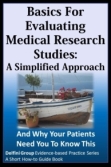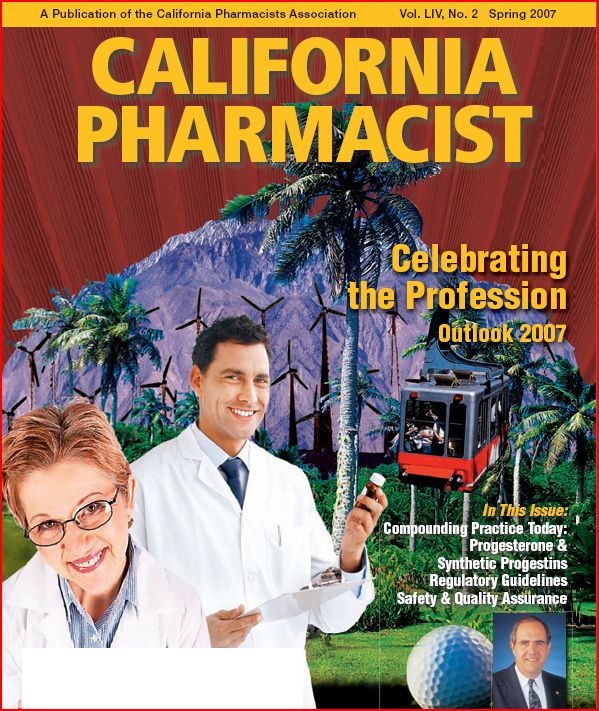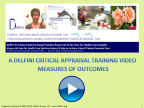
Evidence- and Value-based Solutions for Health Care™
Clinical Improvement Consults, Content Development, Training & Seminars, Tools
Publications: California Pharmacist Evidence-based Review—Reviewer Page
The EBM Information Quest: Is it true? Is it useful? Is it usable?™
Delfini Co-founders: Michael E Stuart MD, President & Medical Director . Sheri Ann Strite, Managing Director & Principal

Why Critical Appraisal Matters
DelfiniClick™Evidence & Quality Improvement Commentaries |
Follow & Share...
Special
Articles: Strite SA, Stuart ME. Getting Started with Critical Appraisal of Medical Literature: It Is Easier Than You Think. California Pharmacist 2009. Vol. LVI, No.4. Fall 2009: 52-55. [PDF] |
DelfiniGram™: GET ON OUR UPDATE LIST ![]()
CPhA California Pharmacist Guide to Doing an Evidence-based Medicine Article Review
Background
Many
published clinical trials are not reliable or clinically useful due to
flaws in design, methodology, execution and/or reporting. This is true
even of studies published in the most respected peer-reviewed journals.
Consequently, clinical trials need to be evaluated for threats to validity
(meaning closeness to truth) and meaningful clinical benefit. We call
this evaluation process, "critical appraisal of the medical literature."
Goals
Your goal is to apply an analytic process [critical appraisal concepts
+ your clinical knowledge + critical thinking] to evaluate your study
to determine two things:
- Are these results likely to be true? Or are they likely to be distorted and misleading due to the operation of bias, confounding or chance?
- If the results are likely to be true, are they likely to be clinically useful? We want study results that address 5 clinical areas, with sizes of the results large enough to be meaningful and worth any trade-offs: morbidity, mortality, symptom relief, emotion or physical functioning, or health-related quality of life.
You will then write an article, using a critical appraisal template, which will inform readers about your findings. Evidence-based approaches require transparency.
........
Process Steps
- Preparation
Download and read Delfini Pearls for the Basics on Critical Appraisal of Superiority Trials for Therapies [PDF].
- You may want to
also download the Delfini
Validity and Usability Tool and the Delfini
Grading, Conclusions & Results Tool for reference. These documents are mini-critical appraisal texts and
help explain the concepts in the other documents.
- Review the Critical
Appraisal Online Tutorial.
- Complete preparatory
reading assignments:
Strite SA, Stuart ME. Getting Started with Critical Appraisal of Medical Literature: It Is Easier Than You Think. California Pharmacist 2009. Vol. LVI, No.4. Fall 2009: 52-55. [PDF] Special Article:
Strite SA, Stuart ME. An Introduction to Systematic Reviews: The Lifeblood of Medical Decision-making. California Pharmacist 2008. Vol LV, No. 3. Summer 2008: 52-56. [PDF]Study Design Essentials for Therapies
Observations versus Experiments
More Optional Reading:
Randomization [PDF]
Evidence Essentials Tutorial
Measures of Outcomes
If you cannot answer these questions, listen to the video (which you may wish to do anyway as other material is covered; note this is the same video at the above tutorial):Self-assessment Questions
- Is a Relative Risk Reduction of 50% a sufficiently high estimate of effect for you to apply the results of a well-done statistically significant study to your patients?
- How do you compute absolute risk reduction?
- How do you compute the number-needed-to-treat, and what does the NNT mean?
- What do you always associate with a measure of outcomes?
- What constitutes meaningful clinical benefit?
Intention-to-Treat Analysis
More Optional Reading:
Analyzing Results
Time-to-Event Analyses [WORD]
More Optional Reading:
Confidence Intervals & Their Use for Interpreting Significance of Results [PDF]
-
Past Examples:
For Future Reading
Strite SA, Stuart ME, Urban S. Process steps and suggestions for creating drug monographs and drug class reviews in an evidence-based formulary system. Formulary. April 2008;43:135–145.
- Download and review
the CPhA
EBM Article Template. You will be completing this template
to produce your article. Review a past review or two to get an idea
of what a finished product will look like: CPhA
Publication Page. Prepare any questions you have.
WHEN YOU ACTUALLY DO YOUR REVIEW, PLEASE STRIVE TO MATCH YOUR FINDINGS TO THE APPROPRIATE ROW IN THE TEMPLATE. IF YOU DO NOT DO THIS, IT WILL BE HARDER FOR US TO EVALUATE, PLUS YOU WILL GET COMMENTS FROM US WHICH SAY TO MOVE IT, AND IT WILL JUST BE MORE WORK FOR YOU TOO. ALSO, INCLUDE YOUR CITATION.
- See Optional
Resources for additional help.
- Arrange
for Preparatory Meetings
Set-up a time for an orientation session with Dr. Craig Stern. At this session, you will discuss the goals and process steps as well as confirming your assignment. Obtain and confirm the official Project Title. You will need this for naming files and emails to help avoid confusion with other projects in progress.
Following this session, arrange for a tutorial session with Mike Stuart MD and Sheri Strite of Delfini Group who are experts in evidence-based practice and critical appraisal. At this session, basic concepts and methods of critical appraisal will be outlined as well as some working tips.
- Beginning
Your Article
Read the assigned article to get a feel for what it is about, then re-read the article again using your critical appraisal tools and critique and grade the article by completing the "EBM Article Template.”
(We are asking you to hold off on looking for editorials, commentaries, etc. on the article until later in the process to give you a chance to develop your own ideas.)
While this will be the first draft of your article, it is still important to do your best work, applying professional writing skills.
- Rename the template,
using the official Project Title as the first word
of the electronic file name.
- Submission
of First Draft & Review
Submit article for review to Dr. Stern and schedule a time to go over the article with Dr. Stern. Be prepared with your questions.
EMAIL NOTE: When ever you email your template, put the official Project Title as the first word in the subject line and please include all relevant attachments (e.g., article) in each email as well, even if you have emailed them to the recipient in the past.
At this time, discuss with Dr. Stern the advisability of looking for editorials, commentaries, etc. on the article (try Medline). If you do this step, compare your critique to theirs and edit as needed.
- EBM Expert
Review
Following this review and any needed rework by you, resubmit your article draft to Dr. Stern. This may result in several iterations back and forth.
When Dr. Stern determines that your article is ready for the next stage, it will be sent to the Delfini Group guest editors, Dr. Mike Stuart and Sheri Strite. When you are notified of this, arrange for a time to discuss the article and your draft with Dr. Stern and the Delfini group. Again, be prepared with your questions.
Delfini will make oral comments during the phone call. Be prepared to take notes. They will follow-up by sending their review notes that were preliminary to the phone call.
- Make revisions
and submit to Dr. Stern, who will follow-up with Delfini. This may result
in another round of comments (or more) until the article is ready.
- FINAL
Submission
Make FINAL revisions and submit them to Dr. Stern and to Cathi Lord. They will forward your final revisions to Delfini. (If Delfini does not agree with you, they may write an editorial so stating.)
- See your work published in California Pharmacist Journal.
For one example of a completed publication, see below:
European/Australasian Stroke Prevention in Reversible Ischaemia Trial: The ESPRIT Trial
• Nguyen K, Equinozio C, Stern C. ESPRIT Trial [evidence-based medicine review]. California Pharmacist 2008. Vol LV, No 1. Winter 2008: 30-31. (Stuart ME, Strite SA, peer reviewers and guest eds.) [PDF]
Others are available here: CPhA Publication Page
........
At California Pharmacist
Menu........
Use of our website implies agreement to our Notices. Citations for references available upon request.
Home
Best of Delfini
What's New
Blog
Seminars
Services
Delfini Group Publishing
Resources
Sample Projects
Notices
About
Us & Our Work
Testimonials
Other
Site Search
Contact
Info/Updates
........
Quick Navigator to Selected Resources
- Tools & Educational Library
- The Healthcare Information Problem
- Tutorials
- DelfiniClick™—commentaries
- On the Same Page™—patient decision support
- Evidence Messaging Scripts
- Delfini Publications
- Medical Leader Interviews
- Glossary
- Recommended Reading
- Recommended Web Links
- Delfini Critical Appraisal Flier
- Get DelfiniGram™ Updates
.......................








